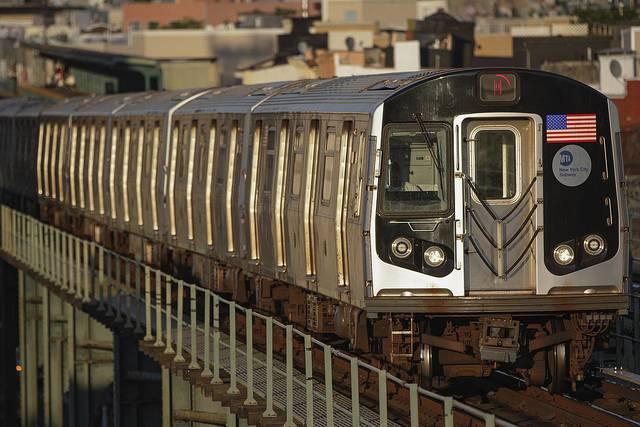
A recently concluded study has come up with findings that will hardly surprise commuters either stuck in their cars or on the buses and trains comprising America's creaky public transportation systems: Sustainable transit is severely lacking across North America.
That is according to a survey conducted by Colorado-based Arcadis, an engineering and design consultancy. The study considered several factors, including financial investments and infrastructure improvements in urban transportation systems, access to various means of transit, active commuting (as in physical activity such as walking) and bicycling infrastructure.
The results are disappointing for advocates who are pushing Americans and Canadians to set themselves free of the car culture that defines most metropolitan areas. Not surprisingly, New York City ranks first in North America for the overall sustainability of its public transit systems (and that is probably why the Big Apple often ranks as one of America's "thinnest cities."). But among the 100 global cities Arcadis evaluated, New York only ranks 23rd worldwide.
Years of declining infrastructure investment, said the authors of the Arcadis study, are the overarching cause of why North American cities' public transportation options are inadequate compared to what is available in larger European and Asian cities.
Arcadis's survey mirrors conclusions other organizations have reached in recent years. "Overall, investments have been declining as needs have risen," said the Center on Budget and Policy Priorities this summer.
The outcome of declining infrastructure investment is that more commuters become frustrated and hop back into their cars, which in the end only makes traffic worse. Cutbacks in public transportation systems leads to declining ridership - except in cities where city bus lines have been drastically redesigned, as in changes such as dedicated bus lanes that usually allow commuters to whiz through traffic.
Other analysts have suggested that ridesharing can complement bus and rail networks, though that conclusion is a dubious one for a commuter sitting in the backseat of an Uber or Lyft car while stuck in traffic in San Francisco or Manhattan. In addition, a danger of relying on on-demand ride services for the long term is that neither Uber or Lyft have consistently turned a profit. Furthermore, the risk that the U.S. automobile loan market could crater due to a surge in dodgy underwriting practices also could soon create a "perfect storm" that would turn commuting into even more of a headache for many workers.
The Arcadis study points out the obvious: even though we have access to the most sophisticated technology ever experienced in human history, those advances have not been applied to how we get to work and school. Our transportation systems are still antiquated, despite the hype and enthusiasm many share for the "smart cities" of the future.
Unfortunately, Arcadis suggests solutions that are not inventive and are no different from what we have been hearing the past few decades. "Bold actions need to happen soon," declares the company, and those steps include overcoming the negative perception many commuters have of public transportation. Companies and real estate developers should derive ways to incentivize citizens to try alternatives to the automobile, such as buses, cycling and other "alternative modes" of commuting. Technology could streamline transport systems, as in smart fare cards or smartphone apps, and it should also be accessible while commuters are in transit. Finally, insists Arcadis, cities should work "collaboratively" with transportation departments, counties, state governments, businesses and investors to improve mobility in North American cities.
The nut that has to be cracked, however, is that public transportation has to be affordable for the commuter, profitable for the agency operating these systems, and convenient. But they are rarely all of the above, and are almost never profitable, which is why private companies often will not touch public transportation. And in the event there is an innovative idea for commuting proposed by a privately company, they are often stifled by governments who see infrastructure as their fiefdom.
Furthermore, cities are often more focused on attracting a marquee company such as an Amazon with generous tax breaks than funding infrastructure projects that could benefit the businesses already paying taxes and contributing to local coffers. Until transportation is seen less as a cost and more as an investment, do not expect transportation systems in North America to improve at any point soon.
Michael Trapp/Flickr

Leon Kaye has written for 3p since 2010 and become executive editor in 2018. His previous work includes writing for the Guardian as well as other online and print publications. In addition, he's worked in sales executive roles within technology and financial research companies, as well as for a public relations firm, for which he consulted with one of the globe’s leading sustainability initiatives. Currently living in Central California, he’s traveled to 70-plus countries and has lived and worked in South Korea, the United Arab Emirates and Uruguay.
Leon’s an alum of Fresno State, the University of Maryland, Baltimore County and the University of Southern California's Marshall Business School. He enjoys traveling abroad as well as exploring California’s Central Coast and the Sierra Nevadas.














